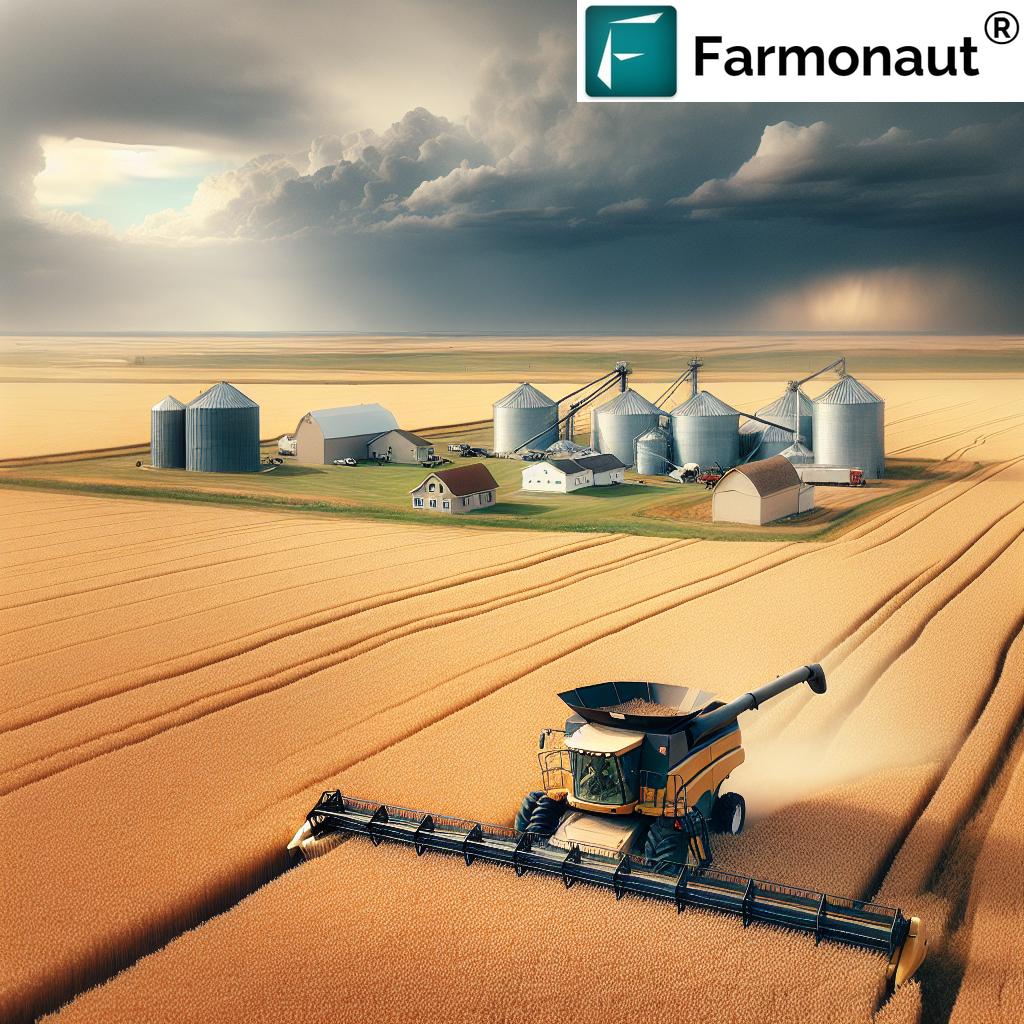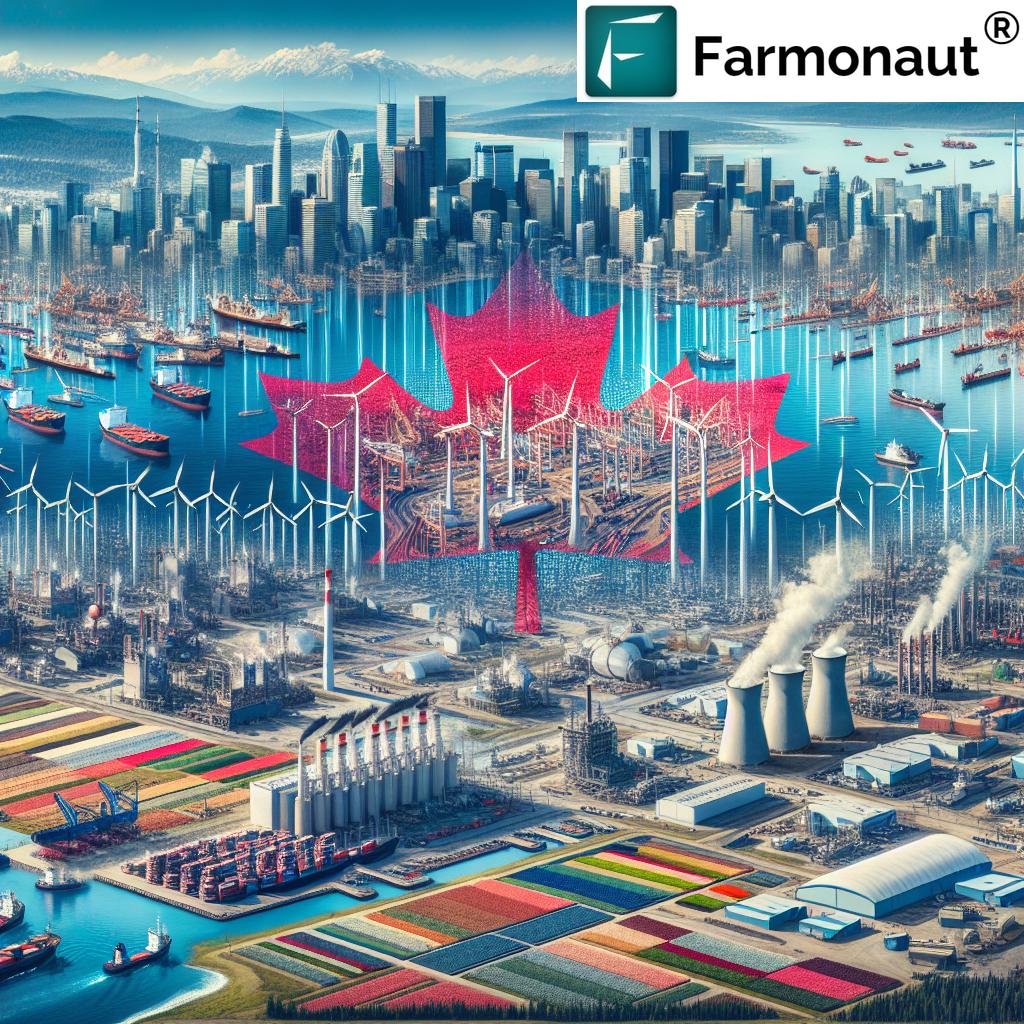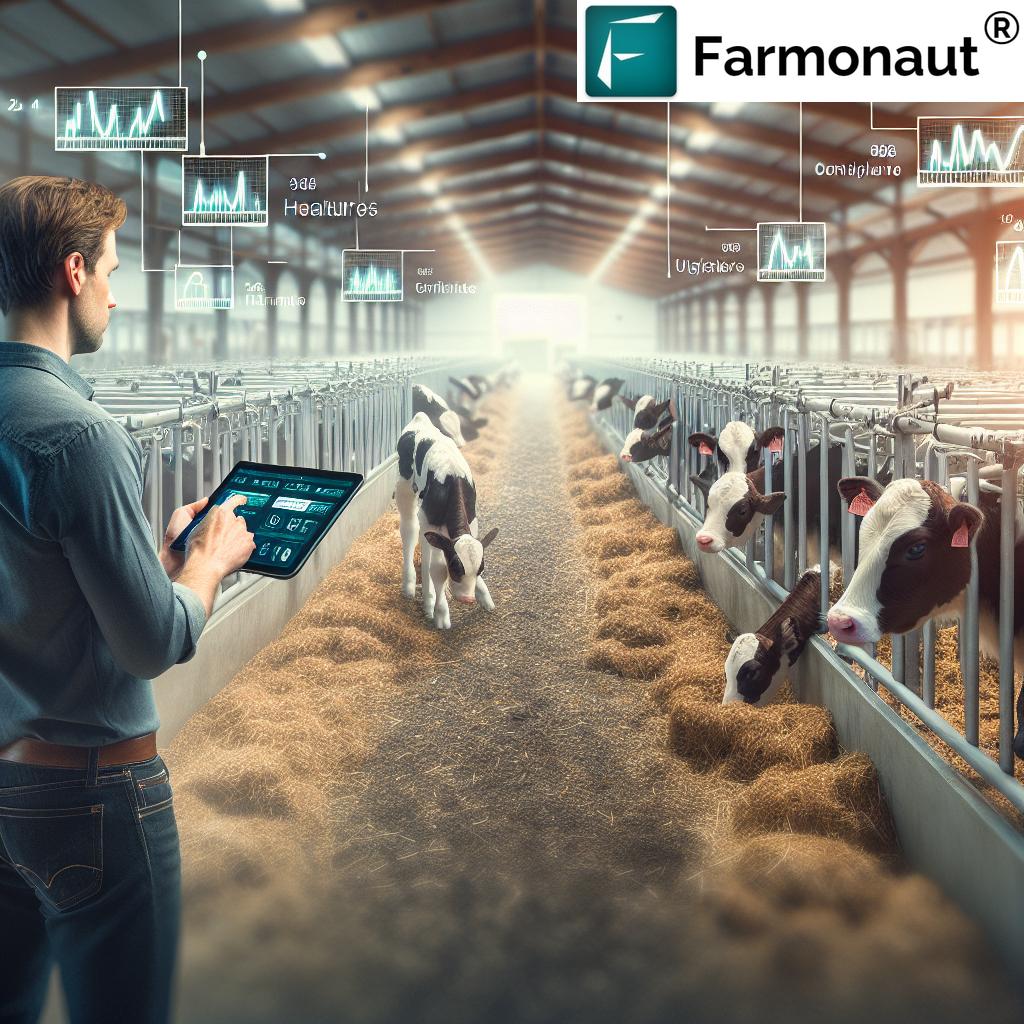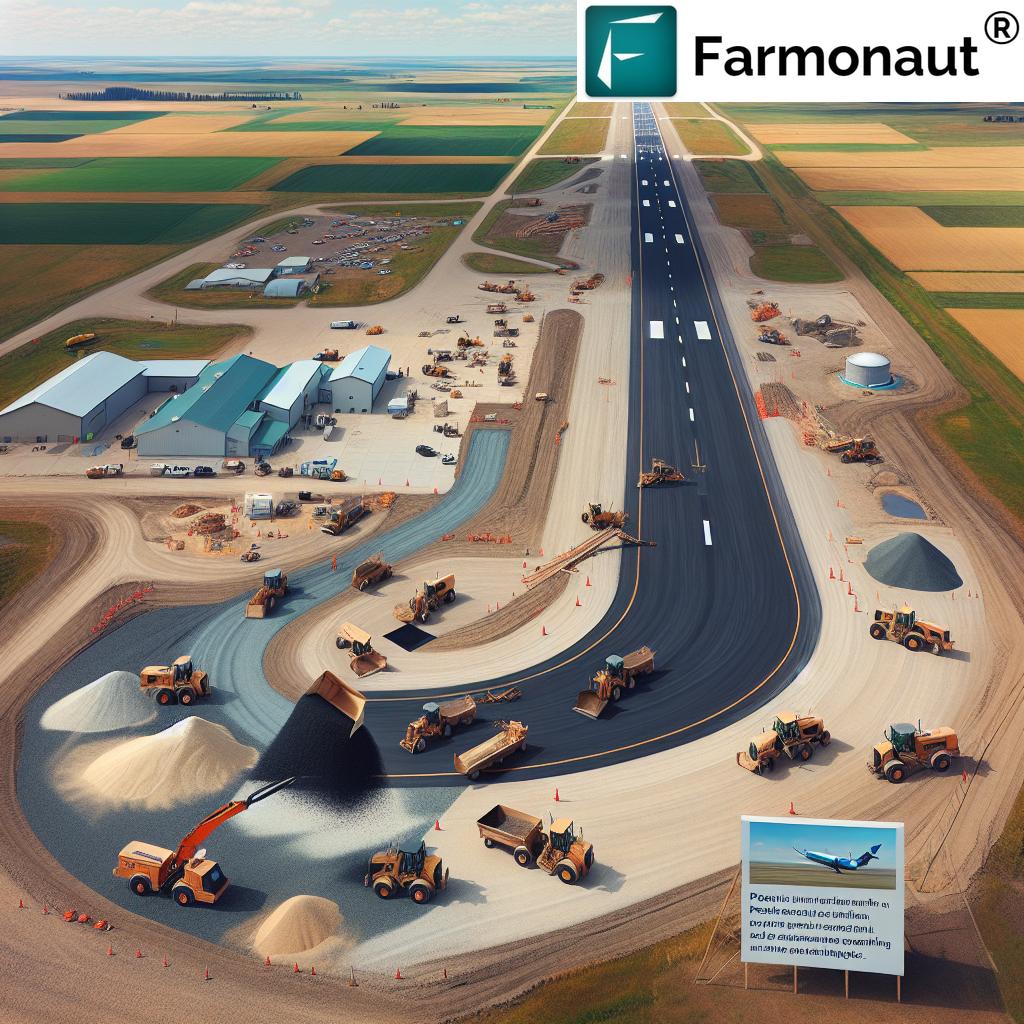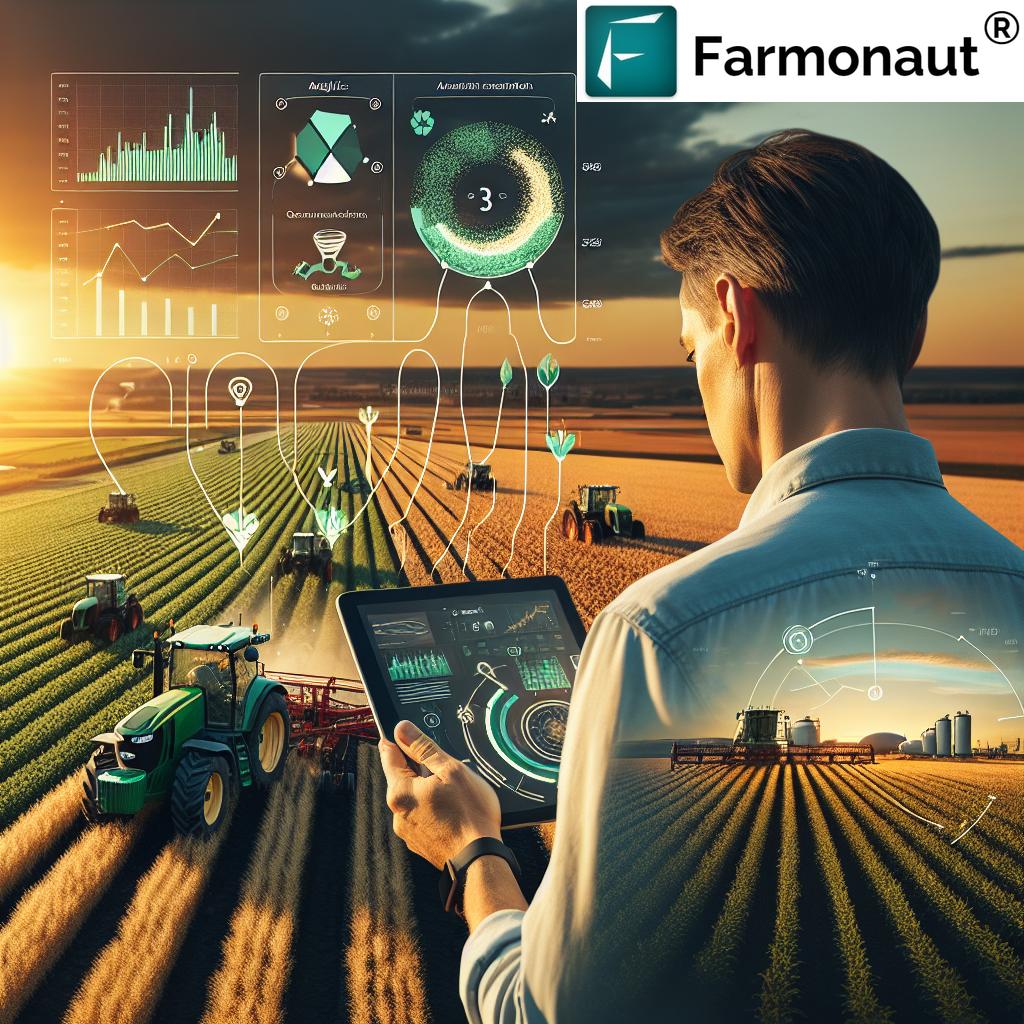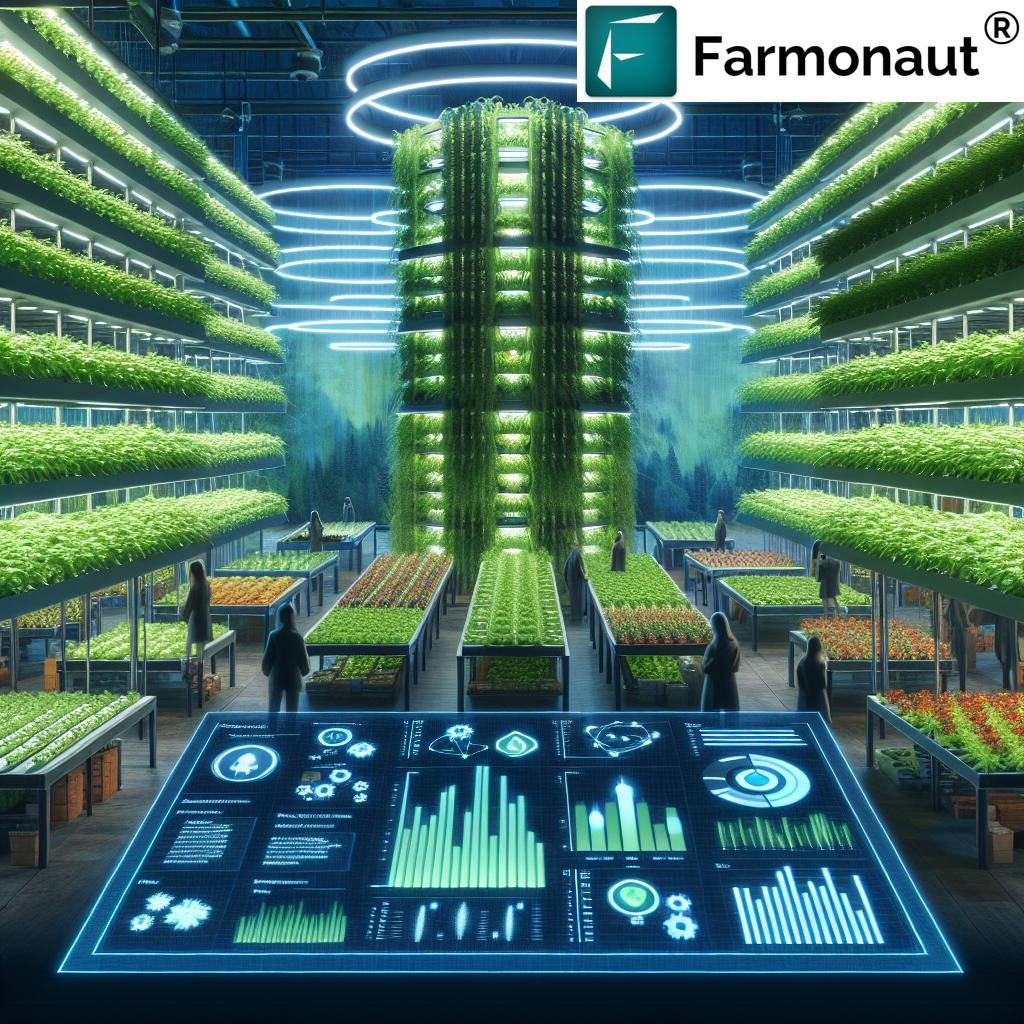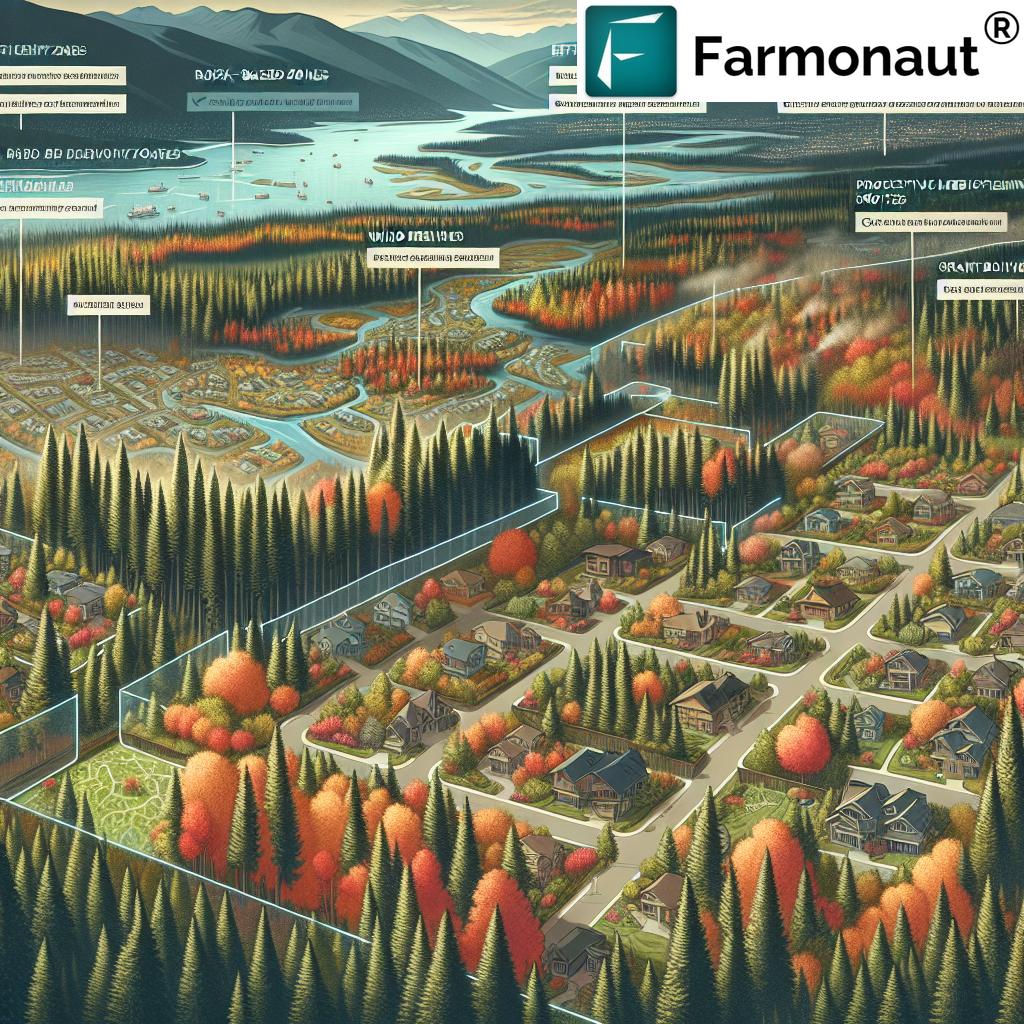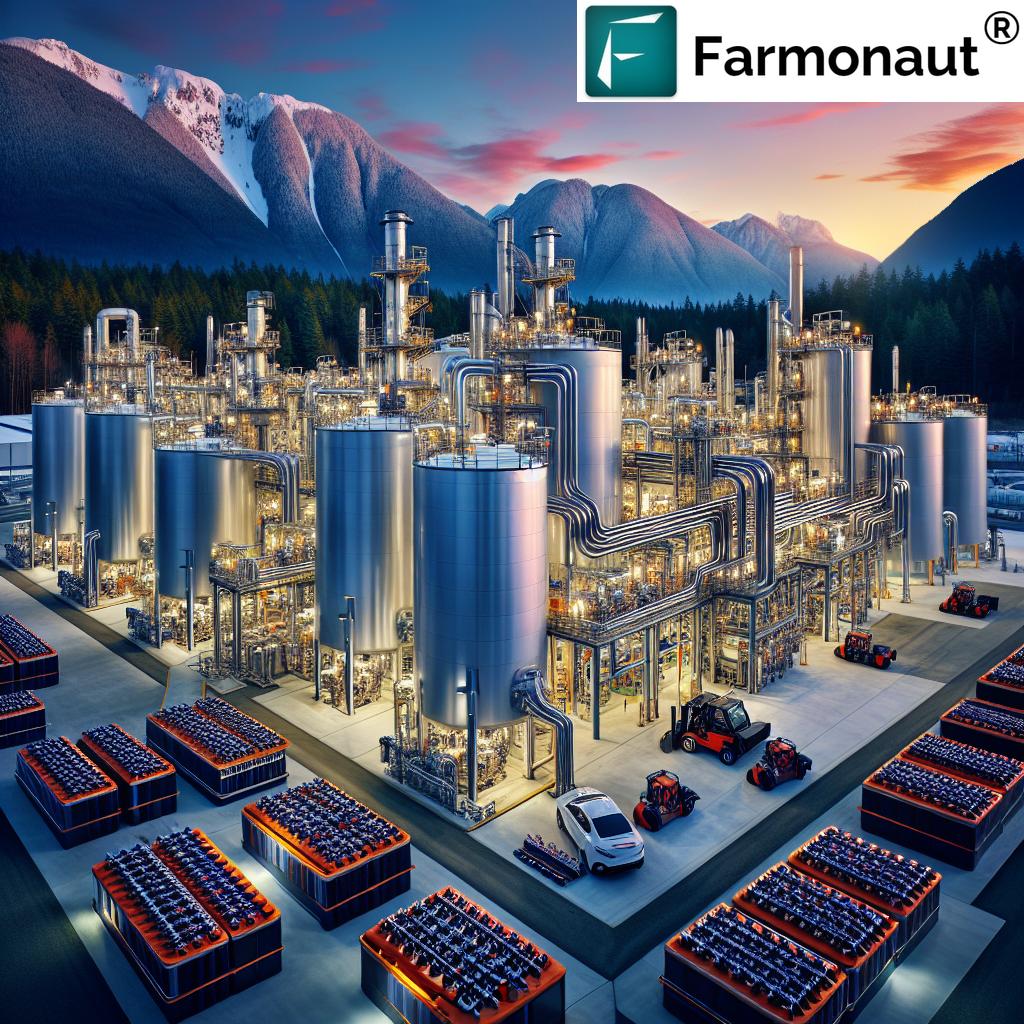Unlocking Energy Efficiency: How Canadian Greenhouse Growers Slash Heating Costs with Smart Curtain Systems

“Energy-efficient curtain systems can reduce greenhouse heating costs by 20-75% in Canadian winters.”
In the harsh Canadian winters, greenhouse growers face significant challenges in maintaining optimal growing conditions while managing escalating energy costs. As pioneers in agricultural technology, we at Farmonaut understand the critical role that energy efficiency plays in sustainable greenhouse management. Today, we’re diving deep into a game-changing solution that’s revolutionizing the industry: smart curtain systems for energy-efficient greenhouses.
The Energy Efficiency Revolution in Canadian Greenhouses
Canadian greenhouse growers are at the forefront of adopting innovative technologies to combat the extreme cold while nurturing crops year-round. Among these innovations, energy curtains stand out as a powerful tool for optimizing greenhouse environments and achieving remarkable energy savings. These systems are not just about keeping the heat in; they’re about creating a controlled microclimate that benefits both plants and profit margins.
Let’s explore how these energy-efficient greenhouse solutions are transforming winter greenhouse management across Canada, and why they’re becoming an essential component for growers looking to thrive in cold climates while reducing their environmental impact.
Understanding Energy Curtains: The Basics
Energy curtains, also known as thermal screens or energy screens, are specialized coverings installed inside greenhouses. Their primary purpose is to create an additional layer of insulation between the crop and the greenhouse covering, typically glass or poly. This extra barrier plays a crucial role in:
- Retaining heat during cold nights
- Reducing energy consumption for heating
- Controlling light levels for optimal plant growth
- Managing humidity and condensation
The effectiveness of energy curtains in greenhouse climate control is remarkable. When properly installed and managed, these systems can lead to heating cost reductions ranging from 20% to an impressive 75%, depending on the greenhouse design, curtain material, and local climate conditions.
Types of Energy Curtain Materials
The choice of curtain material is crucial in maximizing energy savings and creating the ideal growing environment. Let’s examine some of the most popular options:
- Aluminized Polyester: Excellent for heat retention and light reflection
- Clear Polyethylene: Allows maximum light transmission while providing insulation
- Woven Acrylic: Offers a balance between heat retention and light diffusion
- Non-woven Fabrics: Provide good insulation with varying degrees of light transmission
Each material has its unique properties, making it suitable for different crop types and climate zones across Canada. The key is to select a material that aligns with your specific growing needs and energy-saving goals.
Benefits of Energy Curtains in Climate Control
The advantages of implementing energy curtains in Canadian greenhouses extend far beyond simple heat retention. Let’s delve into the multifaceted benefits:
- Temperature Regulation: Energy curtains create a buffer zone that helps maintain stable temperatures, protecting crops from sudden fluctuations.
- Light Management: By controlling light levels, growers can extend or shorten daylight hours, crucial for photosensitive crops.
- Humidity Control: Proper use of curtains can help manage humidity levels, reducing the risk of fungal diseases and improving plant health.
- Energy Savings: The insulation provided by curtains significantly reduces the need for heating, leading to substantial cost savings.
- Improved Crop Quality: A more stable growing environment often results in better crop quality and yield.
These benefits collectively contribute to a more sustainable and profitable greenhouse operation, aligning perfectly with the growing demand for environmentally conscious horticultural practices.
Installation and Automation: Keys to Success
The effectiveness of energy curtains hinges on proper installation and intelligent automation. Here’s why these factors are critical:
Proper Installation
- Ensures complete coverage and sealing when closed
- Minimizes heat loss through gaps or improper fits
- Allows for smooth operation and longevity of the system
Automation in Greenhouse Systems
- Enables precise control based on environmental parameters
- Optimizes energy use by adjusting curtain positions in response to weather conditions
- Integrates with other greenhouse systems for comprehensive climate management
At Farmonaut, we understand the importance of integrating smart technologies in greenhouse management. While our focus is on satellite-based crop monitoring and AI-driven advisory systems, we recognize the synergy between various technologies in creating an optimal growing environment.
Explore Farmonaut’s advanced farm management solutions

“Proper automation of greenhouse systems, including energy curtains, is crucial for maintaining ideal growing conditions year-round.”
Selecting the Right Energy Curtain Setup
Choosing the appropriate energy curtain system for your greenhouse involves considering several critical factors:
- Crop Requirements: Different crops have varying light and temperature needs.
- Greenhouse Design: The structure’s shape and size influence curtain selection and installation.
- Regional Weather Patterns: Local climate conditions dictate the level of insulation required.
- Energy Saving Goals: Balance between initial investment and long-term energy savings.
It’s essential to consult with horticultural experts and energy efficiency specialists to determine the most suitable setup for your specific situation. Remember, the goal is to create an energy-efficient greenhouse that optimizes both crop yield and operational costs.
Energy Curtain Comparison for Canadian Greenhouses
| Curtain Material | Heat Retention (%) | Light Transmission (%) | Estimated Energy Savings (%) | Ideal Crop Types |
|---|---|---|---|---|
| Aluminized Polyester | 75-80 | 20-30 | 50-60 | Ornamentals, Leafy Greens |
| Clear Polyethylene | 60-65 | 80-85 | 30-40 | Tomatoes, Peppers, Cucumbers |
| Woven Acrylic | 65-70 | 50-60 | 40-50 | Mixed Crops, Herbs |
| Non-woven Fabrics | 70-75 | 40-50 | 45-55 | Seedlings, Sensitive Plants |
This comparison table provides a quick reference for growers to understand the trade-offs between different curtain materials. It’s important to note that these figures are estimates and can vary based on specific products and installation methods.
Beyond Energy Curtains: Comprehensive Greenhouse Efficiency
While energy curtains play a pivotal role in greenhouse energy efficiency, they are just one piece of the puzzle. To create a truly sustainable and efficient greenhouse operation, Canadian growers should consider a holistic approach that includes:
- Advanced Ventilation Systems: Proper air circulation is crucial for temperature and humidity control.
- Efficient Irrigation Methods: Water conservation is key to sustainability and cost reduction.
- Supplemental Lighting: LED grow lights can extend growing seasons and improve crop quality.
- Smart Environmental Controls: Automated systems that adjust various parameters based on real-time data.
At Farmonaut, we specialize in providing cutting-edge solutions for farm management, including satellite-based crop health monitoring and AI-driven advisory systems. While our focus is not on greenhouse equipment, our technologies complement these systems by offering valuable insights into crop health and environmental conditions.
The Future of Horticulture: Sustainable Greenhouse Practices
The adoption of energy-efficient technologies like smart curtain systems is shaping the future of horticulture, especially in challenging climates like Canada. These advancements are not just about energy savings; they’re about creating sustainable growing environments that can produce high-quality crops year-round with minimal environmental impact.
Key trends we’re observing in sustainable greenhouse practices include:
- Integration of Renewable Energy Sources: Solar and geothermal systems to power greenhouse operations.
- Data-Driven Decision Making: Utilizing AI and IoT devices for precise climate control and crop management.
- Circular Economy Approaches: Recycling water and nutrients within the greenhouse system.
- Carbon Footprint Reduction: Implementing strategies to minimize and offset carbon emissions.
These practices align closely with Farmonaut’s mission to make precision agriculture accessible and affordable. Our platform’s capabilities in crop health monitoring and resource management complement these sustainable greenhouse practices, helping growers make informed decisions that benefit both their crops and the environment.
Explore Farmonaut’s API for advanced agricultural insights

Case Studies: Success Stories from Canadian Greenhouse Growers
While we can’t provide specific case studies, it’s worth noting that many Canadian greenhouse operations have reported significant benefits after implementing energy curtain systems:
- A tomato grower in Ontario reported a 40% reduction in heating costs after installing aluminized polyester curtains.
- A flower producer in British Columbia saw improved crop quality and extended growing seasons with a dual-layer curtain system.
- A cannabis cultivation facility in Alberta achieved consistent temperature control and reduced energy consumption by 50% using automated energy curtains.
These examples highlight the versatility and effectiveness of energy curtains across various crop types and regions in Canada.
Overcoming Challenges in Implementation
While the benefits of energy curtains are clear, implementing these systems can present challenges for some growers:
- Initial Investment: The upfront cost can be significant, especially for larger greenhouses.
- Retrofitting Existing Structures: Adapting older greenhouses for new curtain systems may require additional modifications.
- Training and Maintenance: Staff need to be trained in the proper operation and maintenance of these systems.
- Balancing Light and Heat Retention: Finding the right balance can be tricky, especially for light-sensitive crops.
To overcome these challenges, we recommend:
- Conducting a thorough cost-benefit analysis
- Seeking expert advice for installation and setup
- Investing in proper training for greenhouse staff
- Utilizing smart technologies for optimal system management
The Role of Technology in Modern Greenhouse Management
As we’ve seen, energy curtains are just one aspect of modern, efficient greenhouse management. The integration of various technologies is key to maximizing efficiency and productivity. At Farmonaut, we specialize in satellite-based crop health monitoring and AI-driven advisory systems, which can complement greenhouse technologies in several ways:
- Real-time Crop Health Insights: Our satellite imagery analysis can provide valuable data on crop health, even within greenhouse environments.
- Weather Forecasting: Accurate weather predictions help in proactive management of greenhouse conditions.
- Resource Optimization: Our AI systems can help in optimizing water and nutrient use, complementing the energy savings from curtain systems.
- Data-Driven Decision Making: By integrating various data sources, growers can make more informed decisions about their operations.
Check out our API Developer Docs for integration possibilities

Environmental Impact and Sustainability
The adoption of energy-efficient greenhouse practices, including smart curtain systems, has significant environmental implications:
- Reduced Carbon Footprint: Lower energy consumption means fewer greenhouse gas emissions.
- Resource Conservation: Efficient use of heat and light translates to conservation of natural resources.
- Extended Growing Seasons: Ability to grow crops locally year-round reduces reliance on imports and associated transportation emissions.
- Water Efficiency: Better climate control often leads to more efficient water use in greenhouses.
These environmental benefits align with growing consumer demand for sustainably produced food and flowers, potentially offering Canadian greenhouse growers a competitive edge in the market.
Economic Considerations for Canadian Growers
Investing in energy-efficient greenhouse technologies like smart curtain systems is not just an environmental decision; it’s a sound economic one. Here’s why:
- Long-term Cost Savings: Despite the initial investment, the reduction in energy costs can lead to significant savings over time.
- Increased Productivity: Optimal growing conditions often result in higher yields and better crop quality.
- Market Differentiation: Sustainable practices can be a unique selling point, potentially commanding premium prices.
- Government Incentives: Many Canadian provinces offer incentives for adopting energy-efficient technologies in agriculture.
For growers considering this investment, it’s crucial to conduct a thorough financial analysis, taking into account factors like energy prices, crop values, and potential incentives.
Looking Ahead: Innovations on the Horizon
The field of greenhouse technology is rapidly evolving, with new innovations continually emerging. Some exciting developments to watch include:
- Smart Materials: Curtain materials that can change their properties based on environmental conditions.
- AI-Driven Control Systems: Advanced algorithms that can predict and adjust greenhouse conditions with unprecedented precision.
- Integration with Renewable Energy: Systems that seamlessly combine solar power with greenhouse operations.
- Vertical Farming Technologies: Adapting energy curtain concepts for vertical and urban farming setups.
At Farmonaut, we’re excited about these developments and how they can integrate with our satellite and AI technologies to create even more efficient and sustainable growing environments.
Conclusion: Embracing Energy Efficiency for a Sustainable Future
As we’ve explored throughout this article, smart curtain systems and other energy-efficient technologies are revolutionizing greenhouse operations in Canada. By slashing heating costs, optimizing growing conditions, and reducing environmental impact, these innovations are paving the way for a more sustainable and productive horticultural industry.
For Canadian greenhouse growers, the message is clear: embracing these technologies is not just an option; it’s becoming a necessity to remain competitive and environmentally responsible. The initial investment in systems like energy curtains can lead to substantial long-term benefits, both economically and ecologically.
At Farmonaut, while our focus is on satellite-based crop monitoring and AI-driven insights, we recognize the importance of comprehensive approaches to sustainable agriculture. Our technologies complement these greenhouse innovations, offering growers additional tools to optimize their operations and make data-driven decisions.
As we look to the future, the integration of various technologies – from energy curtains to satellite monitoring – will play a crucial role in shaping the landscape of Canadian horticulture. By adopting these innovations, growers can not only survive but thrive in the face of challenging climates and increasing environmental concerns.
We encourage all Canadian greenhouse operators to explore these energy-efficient solutions and consider how they can be integrated into their operations. The path to a more sustainable and profitable future in greenhouse cultivation is clear, and it’s paved with innovative technologies and smart management practices.
FAQ Section
Q: What are the main benefits of using energy curtains in Canadian greenhouses?
A: Energy curtains offer several key benefits including significant heating cost reductions (20-75%), improved climate control, better light management, and enhanced crop quality.
Q: How do energy curtains work in maintaining greenhouse temperatures?
A: Energy curtains create an additional insulation layer between the crop and the greenhouse covering, trapping heat during cold periods and reflecting excess heat during warmer times.
Q: Are energy curtains suitable for all types of crops?
A: While energy curtains can benefit most crops, the specific type of curtain material should be chosen based on the light and temperature requirements of the particular crop being grown.
Q: What is the average payback period for installing an energy curtain system?
A: The payback period can vary depending on factors like greenhouse size, local energy costs, and crop type, but many growers report payback periods of 2-5 years.
Q: Can energy curtains be installed in existing greenhouses?
A: Yes, many existing greenhouses can be retrofitted with energy curtain systems, though some structural modifications may be necessary.
Q: How does automation improve the efficiency of energy curtain systems?
A: Automated systems can adjust curtain positions based on real-time environmental data, optimizing energy savings and growing conditions throughout the day and night.
Q: Are there any government incentives for installing energy-efficient systems in Canadian greenhouses?
A: Many Canadian provinces offer incentives for energy-efficient upgrades in agriculture, including greenhouse technologies. Check with local agricultural departments for specific programs.
Q: How do energy curtains contribute to sustainable greenhouse practices?
A: By reducing energy consumption and optimizing growing conditions, energy curtains help lower the carbon footprint of greenhouse operations and contribute to more sustainable horticultural practices.





